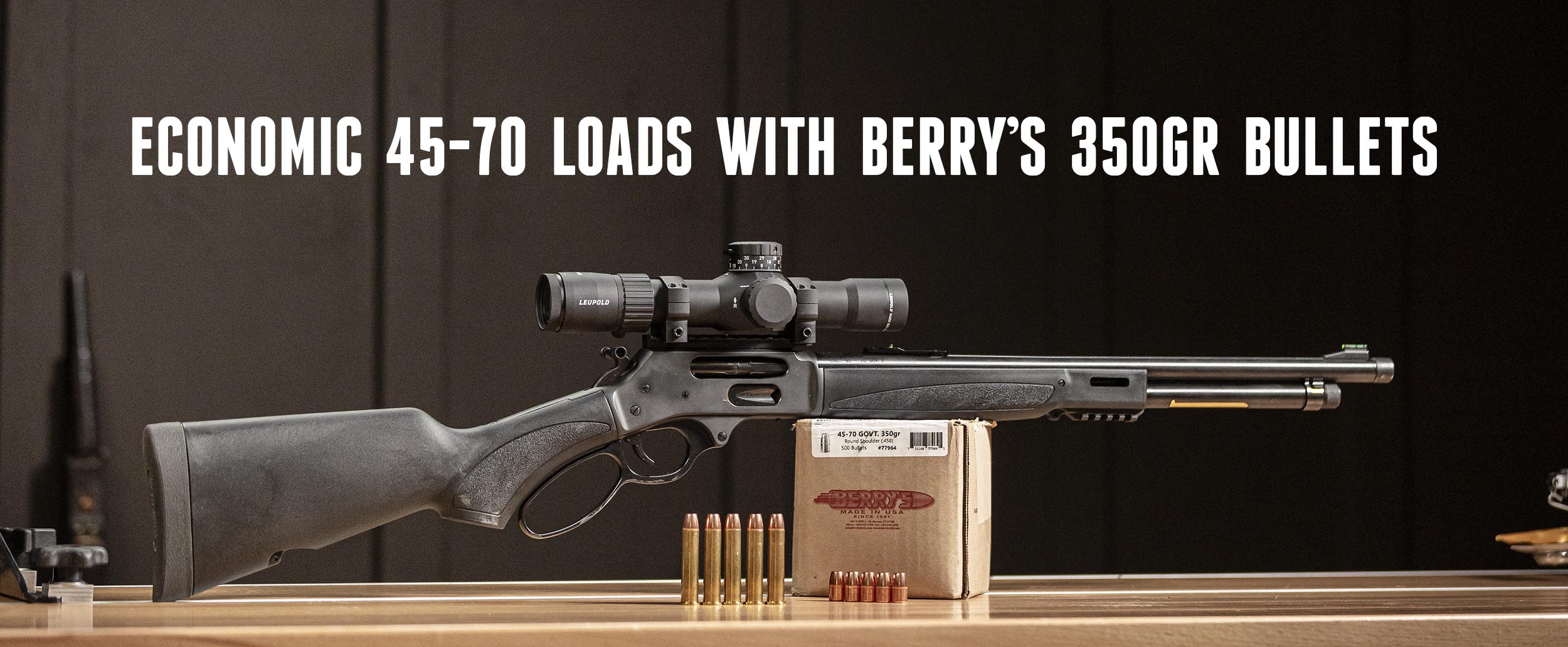Berry’s makes a wide range of reloading products. Their plated bullets offer an interesting and affordable alternative to either jacketed or cast bullets. I’ve used their bullets in various handguns for many years. Here at Ultimate Reloader, we’ve used Berry’s bullets in other handguns and rifles including the .30-30 Winchester. This was our first use of Berry’s Bullets with the .45-70 cartridge.
Disclaimer
Ultimate Reloader LLC / Making with Metal Disclaimer: (by reading this article and/or watching video content you accept these terms). The content on this website (including videos, articles, ammunition reloading data, technical articles, gunsmithing and other information) is for demonstration purposes only. Do not attempt any of the processes or procedures shown or described on this website. All gunsmithing procedures should be carried out by a qualified and licensed gunsmith at their own risk. Do not attempt to repair or modify any firearms based on information on this website. Ultimate Reloader, LLC and Making With Metal can not be held liable for property or personal damage due to viewers/readers of this website performing activities, procedures, techniques, or practices described in whole or part on this website. By accepting these terms, you agree that you alone are solely responsible for your own safety and property as it pertains to activities, procedures, techniques, or practices described in whole or part on this website.
About Berry’s 350 Grain .45-70 Bullet
Although outwardly they may look like jacketed bullets, Berry’s bullets are actually a lead slug plated with copper. The copper plate completely encloses the lead slug and can be applied in different thicknesses.
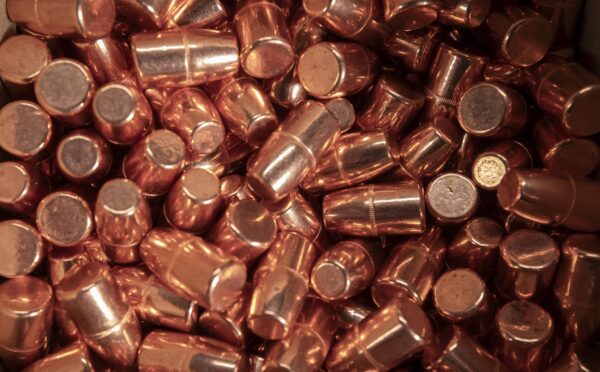
Standard Berry’s handgun bullets are limited to 1,250 fps to avoid stripping the copper plate and exposing the underlying lead. Other “thick plate” bullets can be used at higher velocities. These particular Berry’s bullets are intended for use with the .45-70 rifle cartridge and are capable of holding up to a 1,950 fps muzzle velocity. That would be a stout .45-70 load!
From Berry’s:
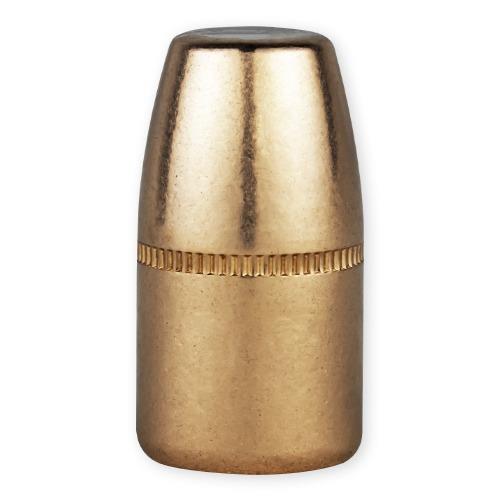
We redesigned our .45-70 bullet to have an improved profile for a more universal fit in all .45-70 firearms.
Berry’s Superior Plated Bullets® are the finest bonded copper-jacketed bullets available today. Starting with a swaged lead core, they are electroplated with copper to their final weight, leaving no lead exposure. They are then re-struck to precise specifications, ensuring a solid bond and providing consistency with every round. Indoor range safe and unbelievably accurate, Berry’s Superior Plated Bullets® are the choice of shooters everywhere.
These .458” bullets are specifically intended for use in .45-70 rifles but I’d suspect that they’d work with any .458” bore rifles if held to appropriate velocity limits. The cannelure is located perfectly to build .45-70 ammo of proper length to function in standard .45-70 lever action rifles. The cannelure can be crimped, but be careful to not overcrimp or the copper plating can be damaged which will degrade bullet performance. I’ve loaded for four different .45-70 lever action rifles over the years and have found that an overall length of about 2.5” cycles through the action well in all of them. (Any standard 1:20” twist .45-70 rifle will stabilize this bullet.)
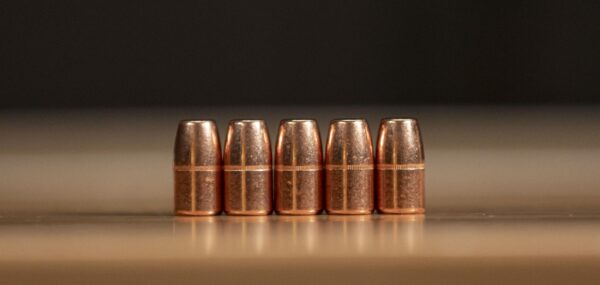
The 350 grain weight is an interesting and useful one for the .45-70. It’s actually on the lighter side for the big, old cartridge, allowing for higher velocity and a somewhat flatter trajectory than traditional 405 grain ammunition. Several excellent hunting bullets are offered in 350 grains, including two soft point bullets from Hornady, one from Speer, and the Swift A-Frame. These bullets are great for hunting, but rather expensive for target practice/plinking.
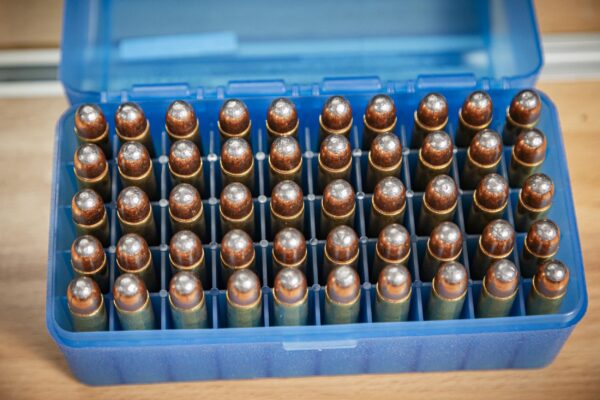
For plinking or target practice, I’d much rather buy less expensive bullets that allow me to shoot more. Berry’s plated bullets are priced considerably below jacketed hunting bullets. They also have another advantage. Some lead bullets quickly foul a bore. Because the led slug is totally encapsulated, plated Berry’s typically shoot quite clean and expose the shooter/reloader to less lead!
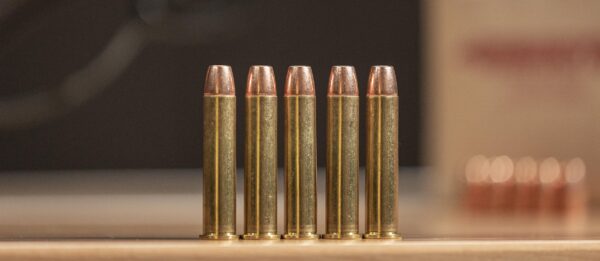
About the Equipment
I loaded .45-70 ammo both at home on my own reloading bench and at Ultimate Reloader using new Hornady brass. It’s worth noting that Hornady brass comes in two different lengths!

The traditional 2.1” length is suitable for blunt nose bullets and is what Hornady supplies in their brass packages. The 2.04” brass is specifically for Hornady’s 250 grain MonoFlex and 325 grain FTX bullets.
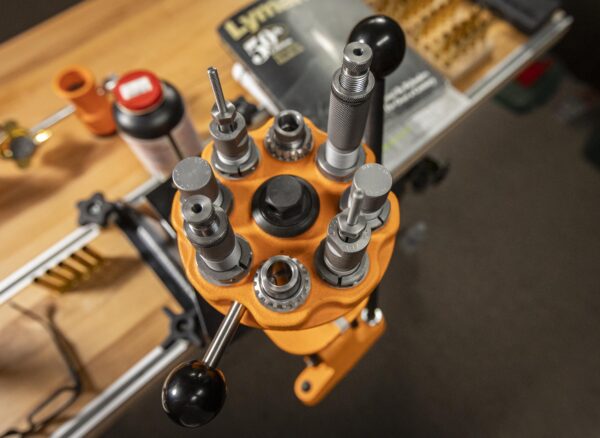
I sized the brass on Lyman’s All-American 8 turret press then belled or flared it with Hornady’s belling or flaring die — just as one would do for revolver cartridges. (The .45-70 reminds me of traditional rimmed revolver cases. It’s bigger and slightly tapered.) Next I wiped off any remaining lube and primed the cases using the Frankford Arsenal Perfect Seat Hand Primer.
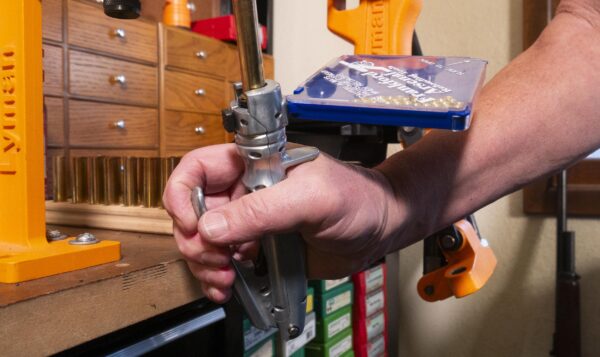
This tool has become my favorite hand-priming tool and I’ve used it extensively over the past year, loading most of my ammunition with it. It’s a versatile and convenient kit compatible with both small and large primers, and a wide variety of cases. It’s also very comfortable to use. The Hornady brass had tight primer pockets—something I appreciate. I had to use a hand tool to slightly ream some of the primer pockets for seating.
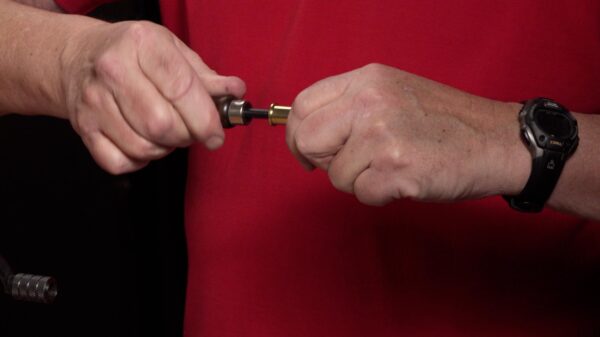
More on the powder charges later, but I charged each case with the appropriate amount of IMR 3031, one of my favorite powders for the .45-70. I threw charges with a Lyman powder measure. It proved consistent enough that I seldom used the powder trickler to bring them up to the desired weight. I charged and inspected all the cases to be sure I had dispensed the appropriate charge weight before proceeding to bullet seating.

A crimp is important with traditional tubular magazine rifles. Bullets can be seated and a crimp applied just with the Hornady seating die, but I’ve found I get a better crimp when I crimp in a separate step. For this I relied upon Lee’s famous Factory Crimp Die. Berry’s bullets are plated, not jacketed, so it’s important to not over-crimp and damage the plating. This can result in poor bullet performance.
About the Loads
Handloading the .45-70 can be confusing at first. It’s vital with this cartridge to understand the strengths and weaknesses of your particular rifle and which loads are safe for it. I chose IMR 3031 for all our loads because it’s long been used in the .45-70, even by Elmer Keith.
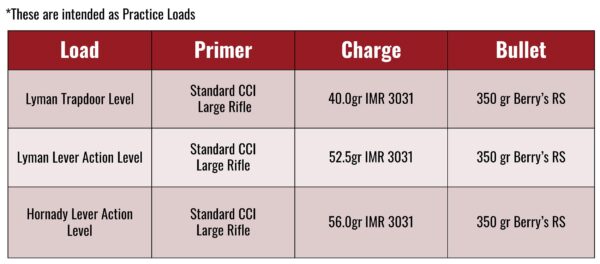
I loaded three different levels of practice loads using Berry’s 350 grain bullet and various charges of IMR 3031: Lyman trapdoor level, Lyman lever action level and Hornady lever action level. All our loads used standard CCI 200 large rifle primers and 2.1” Hornady brass.
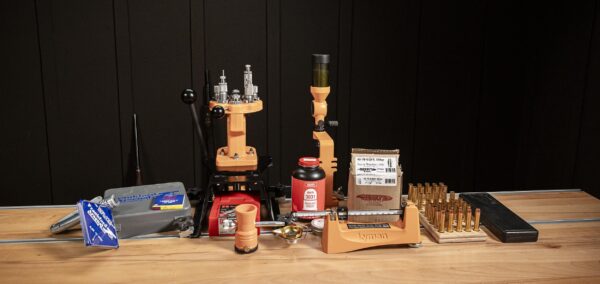
Trapdoor Loads
Original Springfield Trapdoor rifles are 150 years old now and are not considered to have a strong action. I only use “trapdoor” level loads in my original Sharps Borchardt rifle made between 1878 and 1881.

Photo Credit: By Gromitsonabarth
These original trapdoor level loads are far from useless and were used to largely destroy North American bison/buffalo herds in the 1870s and 1880s. (They’re also far more pleasant to shoot than the more powerful loads.)
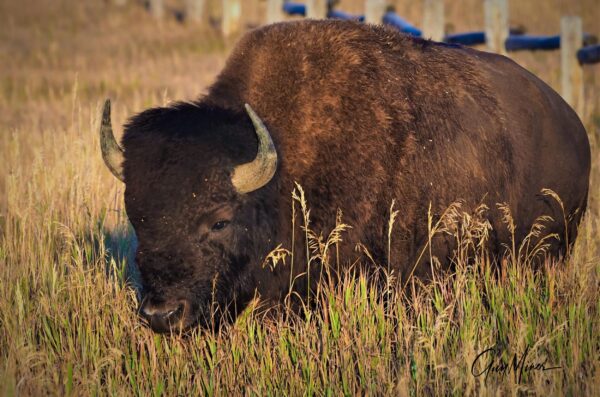
Our trapdoor level load is from Lyman and used 40 grains of IMR 3031 for 1410 fps. ( Lyman’s trapdoor loads are held to under 18,000 CUP (copper units of pressure.)
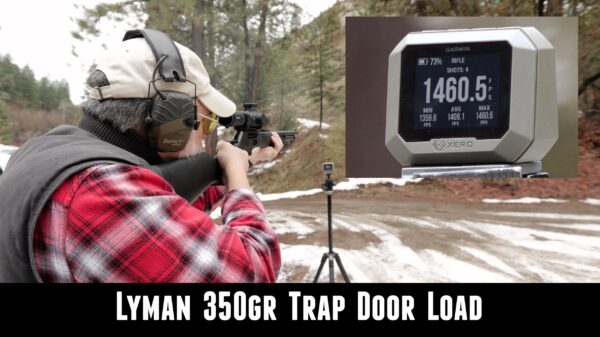
Marlin 1895 & Winchester 1886 Loads
It’s worth noting that the Marlin 1895 is not a 19th century rifle! It’s a modification of Marlin’s 336 action introduced in the 1970s. It’s become an exceptionally popular big-bore lever action rifle, and has even been featured in some blockbuster films. (This was a huge success as the .45-70 had previously started falling out of favor.) Winchester’s 1886 was designed by John Moses Browning and chambered in huge cartridges such as the 50-110. It has ample strength for this level of .45-70 ammunition. Henry now offers .45-70’s that I suspect are just as strong as the Marlin.
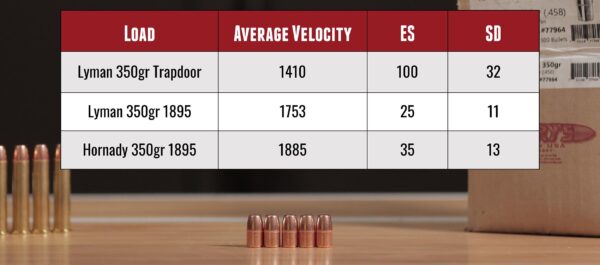
Lyman limits this power level to 28,000 CUP. Our load used the Berry’s 350 grain plated bullet and 52.5 grains of IMR 3031. This is the maximum charge of IMR 3031 Lyman recommends for a 350 grain bullet at the Marlin 1895 level. We observed 1753 fps. It was obviously more powerful than the trapdoor level load, but still reasonable to shoot.
Hornady stipulates that their Marlin level loads should only be used in the 1895 Marlin rifle. They limit these loads to an impressive 40,000 CUP! Our Marlin level loads were 1/10 grain under Hornady’s maximum and used 56 grains of IMR 3031. That produced 1885 fps from the 7.4 pound Henry rifle. That seemed enough power for me!
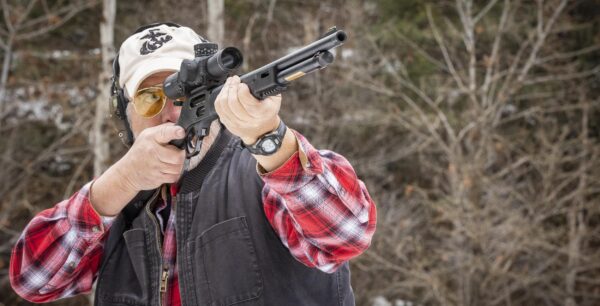
At some point, the recoil of the lever action rifle begins to get obnoxious. The recoil also highlights the importance of proper scope selection and mounting. The scope on our Henry rifle came back far enough to hit my shooting glasses! My own Marlin is set up with a smaller scope mounted farther forward. It never hits my face or shooting glasses. It’s worth noting that Lyman, Hornady and Hodgdon all show different max charges for their Marlin 1895 level loads. Proceed with caution.
***We did NOT venture into the top level .45-70 loads for this project. Those loads are intended ONLY for the very strong Ruger Number One falling block rifle or for suitably modified bolt action rifles. It is not recommended that they be used in any lever action rifle.***
Conclusion
This was the first time I had used the 350 grain Berry’s bullets in the .45-70 cartridge. My initial impressions are quite favorable. With a 1950 fps “speed limit” set by Berry’s, it was safe to use with any of our three different loads, even our top power load at 1,885 fps.
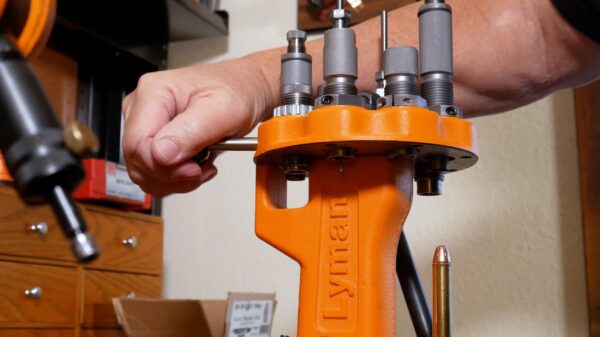
Though stronger Ruger Number One and bolt action conversions can handle higher pressures and generate over 2,200 fps muzzle velocity with a 350 grain bullet, the Berry’s plated bullet should not be used at such velocity.
Topping the list of pros, this bullet helps keep our .45-70 shooting economical! While researching this story I found this Berry’s bullet available for 38 cents each while other 350 grain jacketed hunting bullets were priced at 85 cents apiece. For a “plinking” or practice load, I’ll take that economy!
Get the Gear
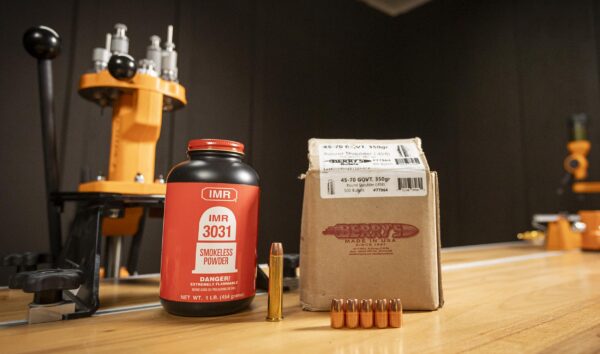
Berry’s Plated Bullets 350 Grain .45-70 Bullets
IMR 3031 Smokeless Powder at Midsouth Shooters Supply
CCI #200 Large Rifle Primers at Midsouth Shooters Supply
Hornady .45-70 Gov’t Full Length Series II 3 Die Set With Zip Spindle at Midsouth Shooters Supply
Lee .45-70 Gov’t Factory Crimp Die at Midsouth Shooters Supply
Henry Lever Action X Model .45-70
Frankford Arsenal Platinum Series Perfect Seat Hand Primer at Midsouth Shooters Supply
Lyman All-American 8-Turret Press at Midsouth Shooters Supply
Lyman Brass Smith Powder Measure at Midsouth Shooters Supply
Don’t miss out on Ultimate Reloader updates, make sure you’re subscribed!
Thanks,
Guy Miner
